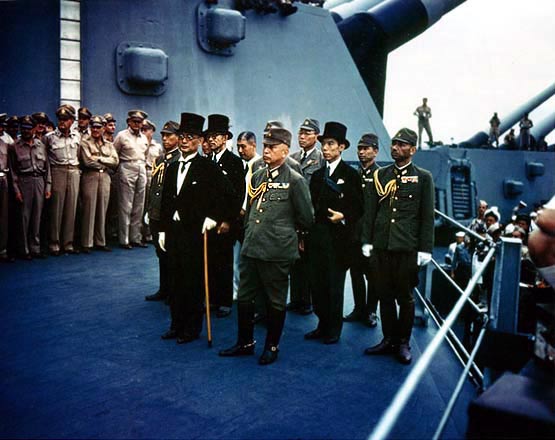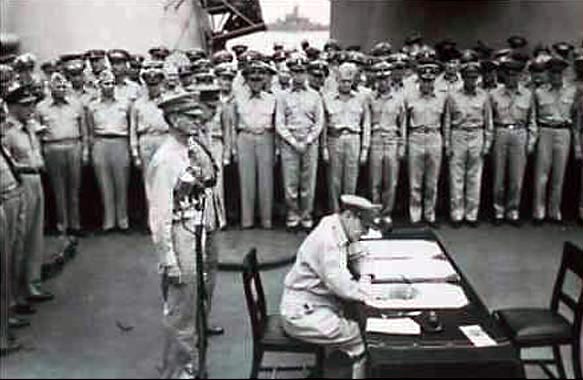B-29s BOMB JAPAN DAYS AFTER
THE TWO ATOMIC
BOMBS WERE DROPPED - Page 2
PLANNED TAKEOVER OF THE IMPERIAL PALACE
While the B-29s were in the air, there was an unprecedented upheaval
taking place on the ground. Many Japanese, devoted to continuing the war,
planned to seize the Imperial Palace and hold the Emperor prisoner. War
Minister Anami rejected the plan, but Major Hatanaka was committed to
stopping the Emperor from broadcasting his acceptance of the unconditional
surrender demanded by the Potsdam Declaration. Hatanaka’s rebellious
troops attacked the Imperial Palace. Inside the Palace the Emperor and
the entire Japanese Cabinet had ratified the signed rescript. The recording
made by the Emperor with total agreement of his cabinet was to be broadcast
at noon the next day, declaring the war officially ended and the acceptance
of the unconditional surrender. A total blackout had caused turmoil on
the grounds of the Imperial Palace. Major Hatanaka needed more troops,
and confronted Lt. Gen. Takeshi Mori who commanded the troops guarding
the Palace. Gen. Mori refused to mobilize his troops, and was killed by
Hatanaka. Rebel soldiers searched desperately for the hidden recording
by the Emperor which if broadcast would end the war. The Palace was ransacked
and vigorously searched but the recording could not be found. Major Hatanaka
went to the broadcasting Station and demanded that his message be broadcast
to all of Japan, urging all Japanese to fight ‘till the end. He
was refused because of the air raid alert. Gen. Tanaka seized the palace
with troops loyal to the Emperor, and Major Hatanaka was ordered to stand
down. The escalating seriousness became unbearable, and War Minister Anami
committed suicide. While all this was going on the B-29s had reached and
completely destroyed the oil refinery at Akita.
THE END DRAWS NEAR
Many Japanese officials, realizing the war was practically over, committed suicide. Major Hatanaka and Lt. Col Shiizaki were two of the hundreds who committed suicide. The B-29 crews, who were returning from the successful bombing mission, were notified that the war was over. After flying over 3,800 miles which made it the longest mission of the war, and in the air for 17 hours, the bombers landed back at Guam. The 315th did not suffer a single loss, which is nothing short of extraordinary. At noon, on August 15, Emperor Hirohito’s recording was broadcast to the Japanese people. The Emperor commanded them to accept the “Unconditional Surrender”. This was the first time that any of the Japanese people had heard his voice. During formal ceremonies on the Battleship USS Missouri anchored in Tokyo Bay, The complete surrender was signed, officially ending what had been the bloodiest confrontation in American History.

JAPANESE SURRENDER ON USS MISSOURI, 2 SEPT. 1945
ARCHIVES

PHOTO: MacARTHUR SIGNS SURRENDER AGREEMENT
ARCHIVES
AKNOWLEDGEMENT
I feel obligated to give credit to Jim Smith for his account of the B-29 raid on Akita. His book without a doubt is the best researched, minute by minute account of this raid. His book “THE LAST MISSION” is a must read if you want to know the complete story. I have gone out of my way to not duplicate Jim’s account. My story is a very condensed version of the entire happening and does not focus on one person or one aircraft. My story follows the exact historical facts. Thanks to the History Channel. Congratulations to the 315th on a job well done. It is indeed frightening to think of how close this war came to continuing with devastating circumstances.
Website Historian